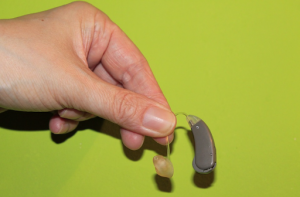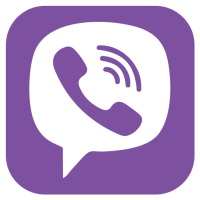Hearing loss is a frequent complication that impairs one’s ability to hear, communicate, and interact socially. Options for hearing loss treatment can be as simple as eliminating extra earwax, classifying underlying conditions (such as fluid in the ear), or wearing a hearing aid. Asurgical procedure or cochlear implants are more complex options.
But which one is best for your case of health care? The answer is primarily determined by the type and severity of your hearing loss. Let’s go over the fundamentals and available solutions quickly.
Table of Contents
Types of Hearing Loss
- Conductive hearing loss
This means that vibrations are not being transmitted from the outer ear to the inner ear, particularly the cochlea. This category can happen for a variety of reasons, such as:
- an extreme build-up of earwax
- an ear infection characterized by inflammation and liquid blockage
- a malfunctioning eardrum
- a perforated eardrum
- glue ear
Ear infections can cause scar tissue, which can impair eardrum operation. The ossicles can be harmed by infectious disease, trauma, or fusing together in such a condition called as ankylosis.
- Sensorineural Hearing Loss
Hearing failure is characterized by inner ear impairment, cochlear dysfunction, auditory nerve damage, or brain injury.
Damaged cochlear hair cells are the most common cause of this type of hearing loss. Hair cells lose some of their component as we age, and our hearing degrades.
Another common cause of hair cell injury is long-term exposure to loud noises, relatively high sounds. Hair cells that have been damaged cannot be overtaken. Rare genetic deformities, inner ear diseases, or head trauma can all cause sensorineural total deafness.
- Mixed Hearing Loss
This is a hearing loss triggered by a mixture of conductive and sensorineural factors. Keep in mind that long-term ear infections can damage both the eardrum and the ossicles. Surgical treatment can sometimes reestablish hearing, but this is not always efficient.
Also read: What are the Causes and Symptoms of Ear Wax?
Treatment Methods: Hearing Aids

If your hearing care specialist suggests wearing hearing aids, they will collaborate with you to adjust them to your particular hearing loss during the fitting process. Hearing aids are not used to heal or restore hearing loss. A hearing aid’s primary function is to amplify sound.
Today’s hearing aids, on the other hand, can be tailored specifically to your specific hearing necessities, intensifying the sounds you need to hear while reducing those you don’t. While they cannot precisely replicate normal hearing, they are very effective for patients with mild to moderate hearing loss.
Types of Hearing Aids
- Behind-the-ear (BTE) hearing aids
These comprise of an earmold and a case, both connecting to each other. The case is placed behind the outer ear, with the relation to the dome running down the front of the ear. The voice from the gadget is either electromagnetically or acoustically routed to the ear.
Because the electronic parts are situated outside the ear, there is less relative humidity and earwax damage with BTE hearing aids than with other gadgets. These gadgets are more popular among children who require a durable and simple-to-use device.
- In-the-canal (ITC) hearing aids
Hearing aids that are visible in the ear canal are known as in-the-canal (ITC) hearing aids. To locate the loudspeaker within the ear, soft ear plugs, typically made of silicone, are being used. These devices are more comfortable for most patients and have greater sound quality.
- Hearing aids that fit entirely in the canal (CIC)
These are small, subtle devices that are not suggested for individuals with severe hearing loss.
- Bone conduction hearing aids
These help people who have conductive hearing loss or are often unable to wear traditional hearing aids. A headset holds the vibrating portion of the device against the mastoid. The sound waves are transmitted to the cochlea via the mastoid bone. If worn for an extended period of time, these devices can be hurtful or inconvenient.
Prevention
Nothing can prevent birth-related hearing impairment or hearing loss caused by illnesses or disasters. However, there are some precautions that can be taken to minimize the risk of risking your hearing.
The systems in the ears can be affected in a variety of ways. Prolonged exposure to noise levels above 85 decibels (dB) – the volume of a traditional lawnmower – can lead to hearing loss.
The following precautions may aid in the protection of your hearing:
- Set the volume of your television, radio, and music player to a reasonable level. Children are particularly vulnerable to the harmful effects of loud music. Loud and annoying toys can endanger children’s hearing.
- Headphones: Instead of sinking out ambient noise with high volume, concentrate on separating the sounds you want to hear and preventing unnecessary noise as much as possible.
- Wear earphones or earmuffs if you work in a loud environment, such as dance clubs, nightclubs, or pubs.
- Wear earplugs to loud events such as pop music events, motorcycle racing, and other sporting events.
- Do not insert cotton swabs into adult or infant ears. The same is true for Q-tips and tissues.
Advanced Hearing Aid Technology
Each significant hearing aid company provides several amounts of modern digital technology in addition to basic hearing aids. Hearing devices become more completely automated and furnished with more characteristics as technology advances, allowing people to communicate more effectively in difficult listening circumstances.
A hearing aid with sophisticated tech, for example, may have eight or more streams to divide sound for processing rather than two. This divides the signal into even relatively small frequencies, resulting in higher signal conditioning resolution.
Concluding Thoughts
The best treatment for hearing problems is determined by a variety of factors that are distinctive to each individual’s situation. A patient must collaborate with their health professional or an audiologist to create a plan that is tailored to their specific needs. Hearing aids, earwax removal, implantable devices, and surgery are all common treatment solutions.
Make sure to test your hearing and use hearing aids if you notice any decline in your hearing abilities and health.

 Login/Register
Login/Register











Be the first to comment on "What is the Best Treatment for Hearing Loss?"